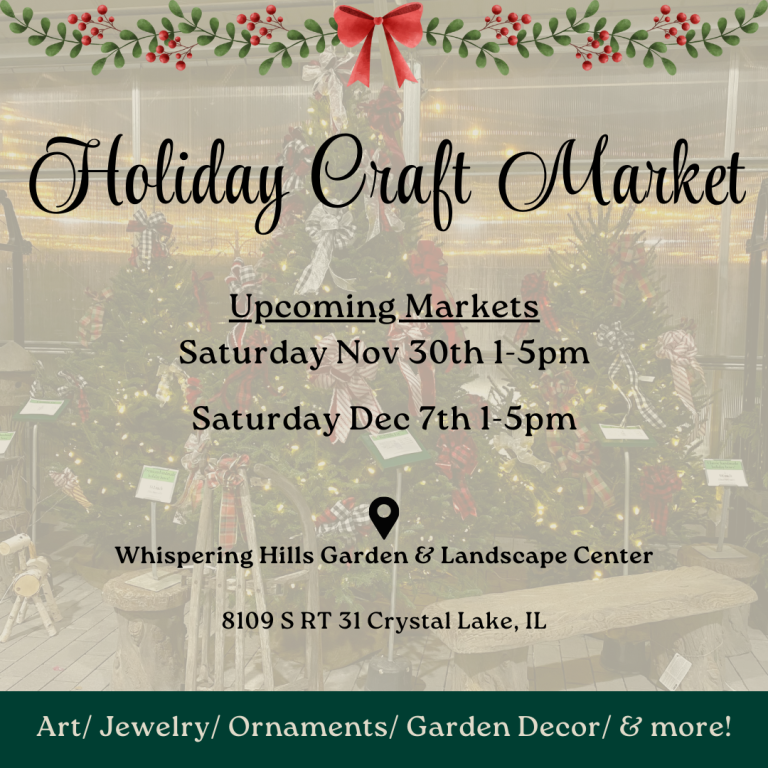
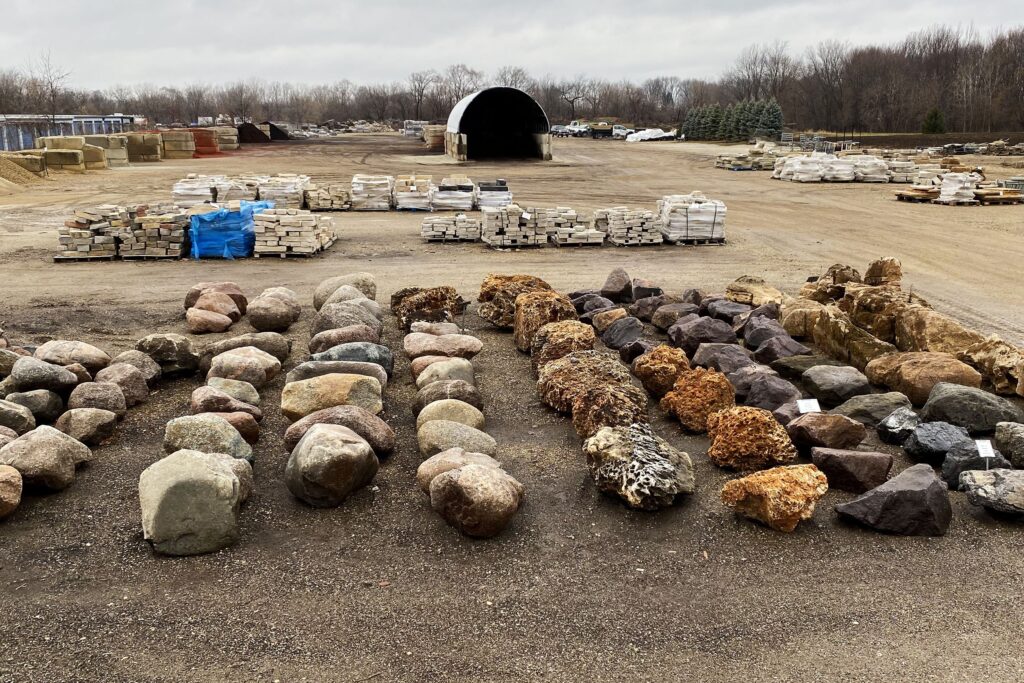
A row of plants haphazardly planted into the ground may be considered a garden, but to fully experience the benefits of a home garden or landscape, the design of your land should be a consideration, possibly equal to the plants you end up growing in your yard. Boulders are an excellent element that can be utilized in landscape design. Boulders create height, structure, arrays of texture and color, and add natural characteristics to landscape designs that complement plant life. A path of small boulders can be used to guide someone through a garden or used as edging to define planting beds. Large boulders become centerpieces to an intentional landscape, enhancing the aesthetic value of the land. Boulders can inform what to plant, where and help a viewer take in the sight of a landscape, all tied together in a thought out design.
As described in the book Stone in the Garden by Gordon Hayward (2001), “the key to planting around large stones is to acknowledge that they are an essential element of the natural landscape and that any gardening you do in relation to them should be inspired by trees, shrubs, and perennials native to your area.” Continuing, “while fine perennials and shrubs introduced from across the world can certainly be interplanted among native plants or hybrids derived from them, indigenous plants should predominate. For example, imagine how beautiful a grouping of balsam firs would look among a gathering of boulders”
As another example not specific to the Midwest, “if you live in the Southwest, imagine setting boulders in a garden at the edge of the Sonoran desert out beside the house and then setting out a group of palo verde trees interplanted with Mexican evening primroses, red yucca, purple lantana, bush dalea, and blackfoot daisies, all knitted together with a unique form of drought-tolerant groundcover.”
Boulder selection is a consideration to think about before you start to work on your design. The book Stone in the Garden by Gordon Hayward (2001) illustrates this by stating that, “the very best boulders for a garden have been above ground in fields or woodland or prairie for decades or centuries or have been in a supply yard long enough to seem old and settled. Patches of moss and lichen grow on them; a patina of age is intact. They’re not scratched or gouged by a back-hoe, and they may have dirt attached to the bottom third of their bulk.” Further, “when you do place boulders or expose bedrock in your garden, think big. Big boulders and broad shoulders of bedrock have a presence; little rocks and bits of bedrock do not. Think in terms of feet, not inches.”
The reasoning behind selecting plant material and boulders that are native, or at least rhyme visually with what is native to your landscape is that, “good garden design sets a house into rather on the landscape. Boulders are just one element often used to make this connection between the house, its new garden, and the old natural landscape in the distance.” By using plant material and hardscaping that reflects the characteristics and textures of your native landscape, you will be bringing your home into the land instead of setting landscaping on top of a plot.
A good way to ensure that your landscape design will blend within your native landscape, even before you place your first boulder is to think about positioning. As instructed by the book Stone in the Garden by Gordon Hayward (2001), “groups of boulders of varying sizes and shapes (just as you would find them in nature) so that when you see the group, you also see others like them in nearby gardens as well as in the distant landscape, and the whole scene looks natural. Boulders then become a strong form that gets repeated in the foreground, the middle ground, and the background, thereby linking all three into a comfortable relationship.”
For extra credit, consider the artifacts that are etched into your boulders. “When setting boulders in the garden, respect their individual shapes and forms and ‘grain’ — that is, the flow of striations, the lines or layers of sedimentation—so that you place the boulders in the garden in a way that reflects its innate qualities.” Continuing, “if you have a sloping boulder, set that slope to direct your eye to some important element of the garden or to direct movement down a path.” Furthermore, “if you have several boulders that clearly have a distinctive grain, set them all in the garden, no matter how far apart, so that the grain of each stone runs in the same direction. That way, they look as though they had been placed by the same glacier rather than by your hand”
When working with boulders and natural stone, it is best to really think through the design of what you want to create, before you place your first stone. At Whispering Hills, we carry a wide array of boulders and natural stone. From granite boulders large and small, sponge boulders, feather boulders, weathered boulders, trap boulders, and black ice boulders, we have everything your landscape needs to start incorporating boulders into your landscape design. Boulders simply purchased and placed haphazardly will do little to the visual appeal and structural integrity of your landscape, but a well thought out boulder placement can tie together even the most sparse or intricately designed landscape.
Whispering Hills Garden and Landscape Center is a full service landscape center and nursery located in Cary, Illinois. Stop in today to schedule a Spring 2022 cleanup. (Updated: 12/15/21)
Shop Archive
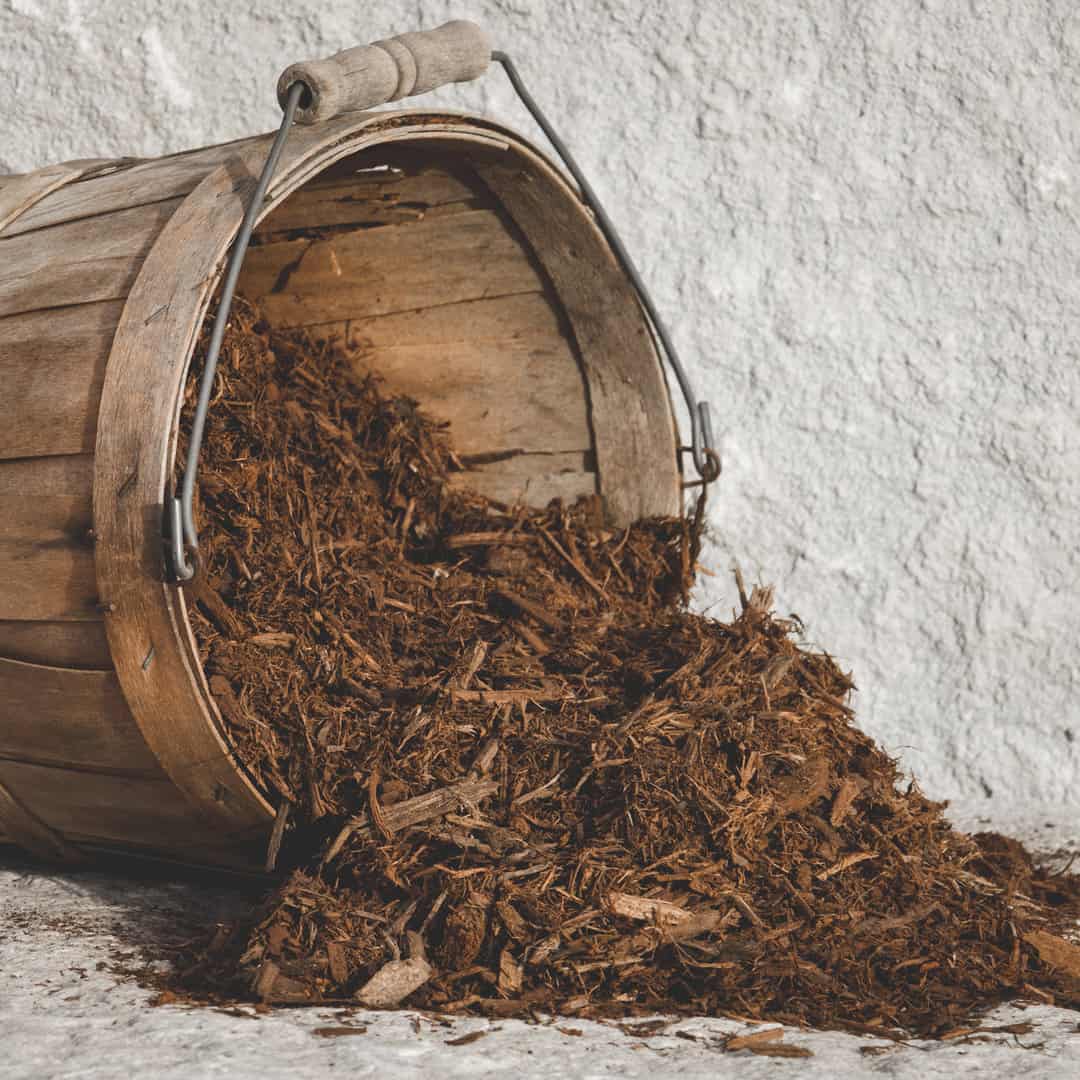

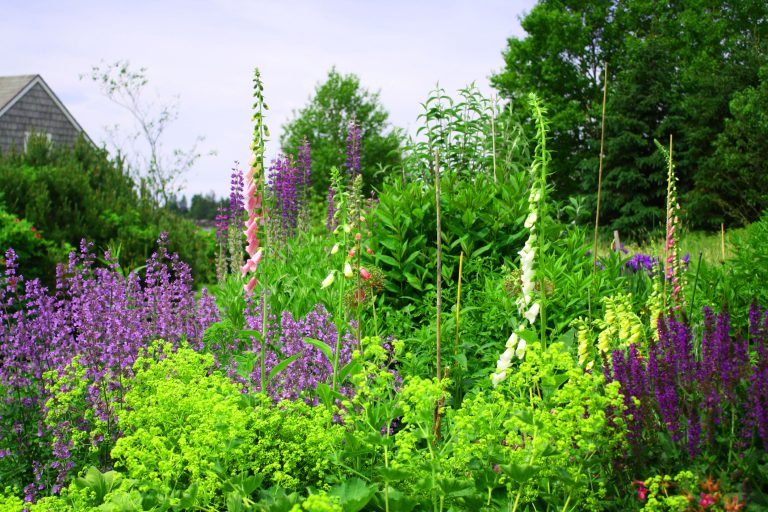
In an era where sustainability is more than a buzzword, Whispering Hills Garden Center
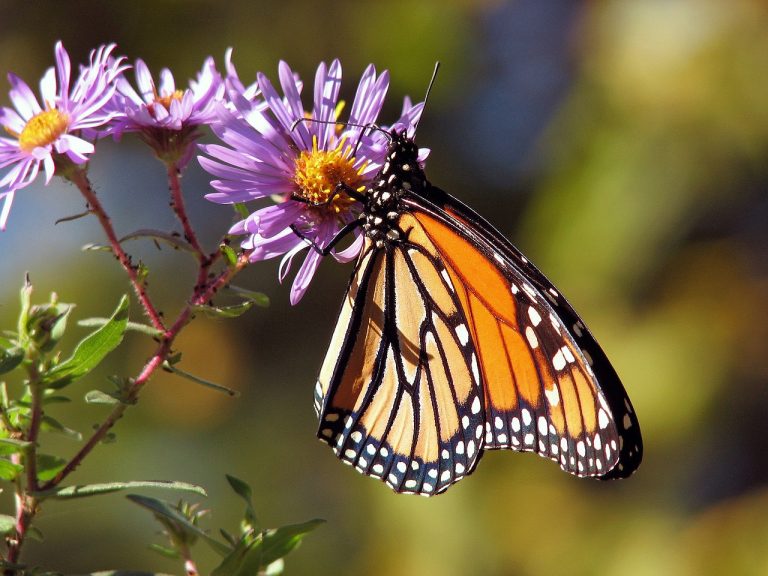
June is National Pollinator Month, a perfect time to celebrate the essential role pollinators